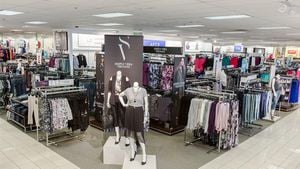Boeing's Starliner spacecraft has made headlines once again, but this time, the buzz is less about its ambitious space travel and more about its empty return to Earth. On September 7, 2024, the Starliner culminated its long-anticipated mission by touching down softly at the White Sands Space Harbor, located in New Mexico. This uncrewed landing concluded what was meant to be the spacecraft's inaugural crewed test flight. Instead of returning with astronauts, the capsule arrived alone, leaving NASA's astronauts Butch Wilmore and Suni Williams stranded on the International Space Station (ISS) until at least February 2025.
The Starliner mission was originally slated as an eight-day venture, but various complications along the way significantly altered the plan. Challenges such as unanticipated thruster malfunctions and helium leaks plagued the flight almost from the beginning, prompting NASA to decide against allowing the astronauts to return home aboard the Starliner. Instead, they'll modernize their trip back using SpaceX's Crew Dragon, awaiting their return flight.
During its return, the gumdrop-shaped spacecraft expertly executed its automated descent, utilizing parachutes to slow its fall and airbags to cushion the landing, reporting sonic booms echoing across the desert night sky. According to Steve Stich, manager of NASA's commercial crew program, the landing was met with enthusiasm, dubbing it "a bullseye landing" and commending the Starliner's flawless reentry process.
While this successful landing is undoubtedly a relief for Boeing and NASA, the empty capsule's return raises serious questions about the spacecraft's reliability. Starliner has faced numerous setbacks since its inception—including software bugs and unfortunate malfunctions. Initially, it was intended to provide astronauts with secure travel to and from the ISS. Yet, since 2014, NASA has invested $4.2 billion in Boeing's program, contrasting sharply with the approximately $2.6 billion allocated to SpaceX. So far, SpaceX has successfully flown astronauts on multiple missions, whereas Boeing's progress has stagnated due to delays and technology issues.
With plans for Starliner's first operational mission now postponed until at least August 2025, the urgency grows for Boeing to tackle its technical challenges. NASA plans to perform detailed analyses of the flight data collected during the Starliner's return to determine necessary adjustments for the spacecraft's design and operational protocols. Despite the promising return, new troubles have been detected, including failures within the thruster systems and temporary loss of guidance.
The stakes are high not just for Boeing but also for the future of human spaceflight collaboration between NASA and private companies. Wilmore and Williams now face the prospect of extended isolation as they continue their mission aboard the ISS, managing the physical and psychological impacts of microgravity and limited social interaction. Meanwhile, their prolonged stay may yield valuable insights for NASA’s research efforts on the effects of prolonged space travel.
Despite the troubling developments, Boeing has maintained optimistic communications with NASA. They commend the Starliner team’s efforts to guarantee flight safety and readiness. Nevertheless, it's clear the road ahead for Starliner is fraught with uncertainty, and Boeing must rapidly demonstrate reliability to keep its foothold within NASA’s Commercial Crew Program.
The backdrop to this dilemma is reinforced by the struggles Boeing has faced beyond the Starliner program. The aerospace giant’s reputation for safety has been under scrutiny, especially after multiple high-profile incidents involving its commercial aircraft. Now, its aspirations for participation in human space exploration hang delicately on resolving these technological issues.
Essentially, the saga of the Starliner encapsulates not only the technical challenges of spacecraft development but also the intense competition brewing between Boeing and SpaceX. The latter has swiftly established itself as the leader, successfully completing numerous crewed missions and, most critically, securing NASA’s trust. Don't forget, the ISS is set to be decommissioned by 2030, putting additional pressure on Boeing to earn its place as a reliable astronaut transport option before the timeline runs out.
Now, as the dust settles over New Mexico’s arid landscapes, both Boeing and NASA face tough questions about the future of spaceflight. For the foreseeable future, the focus remains not only on bringing the astronauts home safely but also on ensuring Starliner can eventually fulfill its purpose without losing stride against formidable competition.



